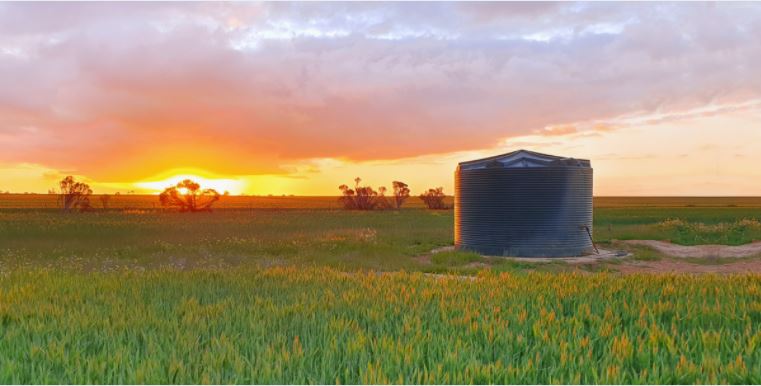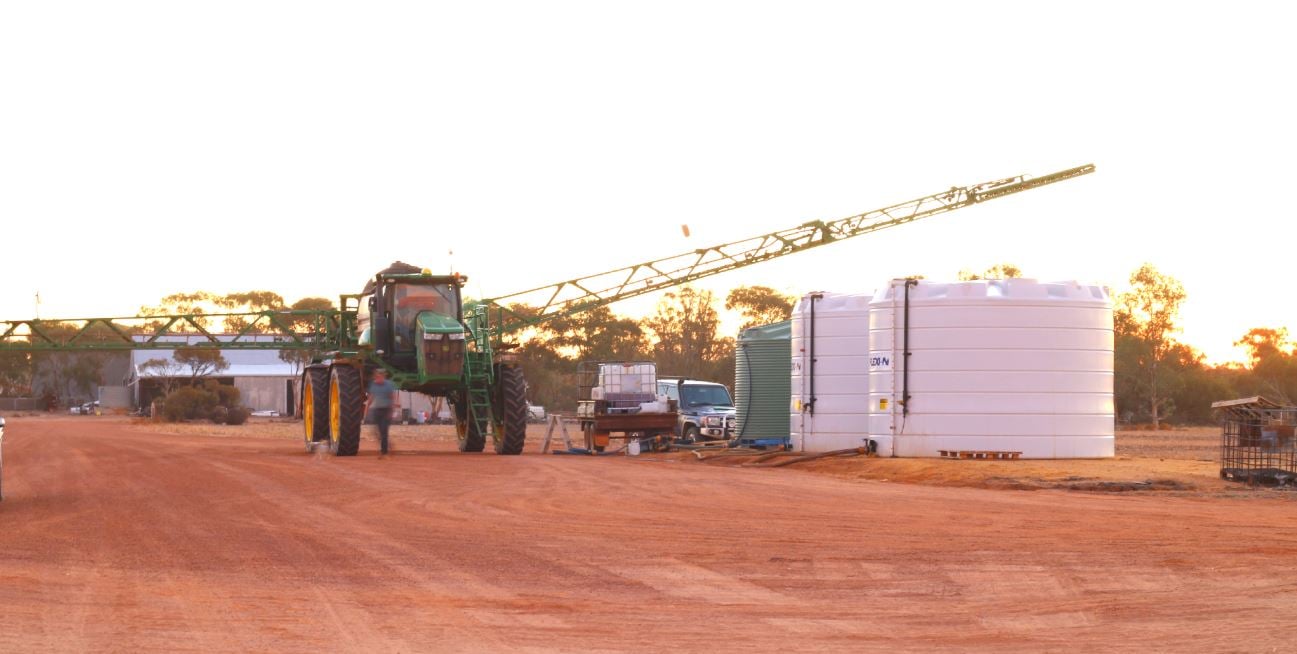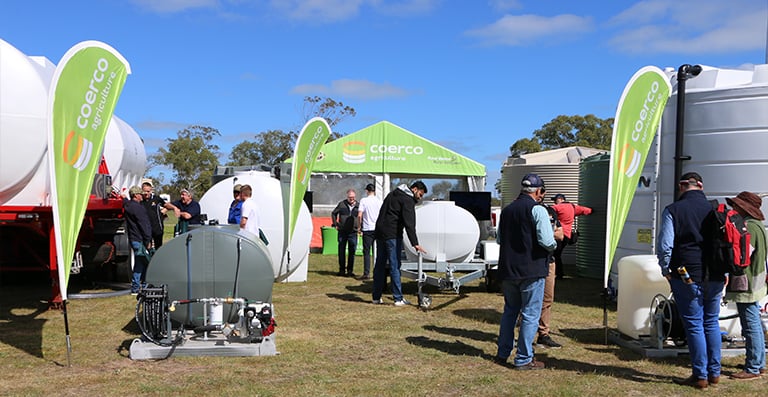The purpose of this article is to help you gain insights from some of the most important questions you should ask before purchasing and installing poly water tanks. Knowing the answers will aid in your decision and prepare you for the responsibilities of the road ahead. The questions range from specific questions about poly tanks and general questions that'll apply to other types of tanks as well.
The reason is simple: the more knowledgeable you are, the more confident you’ll feel whatever decision you make.
1. How to determine water tank size?
- Based on potential rainwater collection
- Based on average household requirements
- Based on farm water requirements
2. Are poly tanks safe for drinking water?
3. Does poly tank colour matter? What is the best colour?
4. How do you prevent algae in drinking water tanks?
5. What are the main comparisons between different water tank types?
6. What type of poly AG tank do I need?
7. What is a rainwater harvesting system comprised of?
8. What are the setup costs when starting a rainwater harvesting system?
9. What are the different methods of collecting rainwater?
10. How effectively are you using water?
11. Is rainwater harvesting worth it?
Looking to buy a poly tank now?
1. How to determine water tank size?
This is one of the most important questions to ask yourself before tank purchase. A tank that’s too small means you lose the opportunity to harvest more rain. If it’s too big, then you’re wasting the space and spending more on a tank that could be smaller. More importantly, determining the right size ensures you have sufficient water to meet your needs.
You can determine your water tank size based on the following:
- Potential rainwater collection
- Average household water requirements
- On-farm water requirements (either stock water or water for crop spraying)
Determining water tank size based on potential rainwater collection:
You have two options here. Find out how much rain you can catch with our rainfall calculator button below or follow the section under "Formula for potential rainwater collection".
Formula for potential rainwater collection:
Potential collectable rainwater (litres) = Roof area (m2) x rainfall (mm) data from BOM x run-off coefficient x filter efficiency
A description of each element in the formula is below.
Catchment area: Otherwise the amount of roof available and suitable for rainwater collection.
Average rainfall: Rainfall data—whether daily, monthly, or yearly—is crucial in the productivity of your rainwater harvesting system. This information can be taken from the Bureau of Meteorology and categorised by state, by season, or by month.
See this link below and feel free to explore their website:
Average annual, seasonal and monthly rainfall
Run-off coefficient: Not all of the water that flows through your roof will find their way into your storage tank. This will depend on how your roof is angled.
A pitched roof will have a coefficient of 0.85. A flat roof with a smooth surface is equivalent to a coefficient of 0.55. And a flat roof with some obstructions like gravel or a thin turf is equivalent to a 0.45 coefficient. The higher the coefficient, the better for rainwater catchment. If you estimate your roof as neither too pitched nor flat, you can assign a value of 1, which means it can collect all of the rain falling on your roof.
Filter efficiency for first flush diverters: This device flushes out the first flow of water coming from your roof to eliminate debris and prevent it from going inside your water tank. A flush diverter’s efficiency data is best obtained from its supplier. If you can’t obtain this information, assign an efficient factor of 0.80 (80% efficiency).
|
NOTE: Some people opt out of installing a first flush diverter in order not to waste any water. If you’re like them and you want to harvest as much rainwater as you can, then simply remove this from the formula. However, if you have to use water for drinking purposes and/or for watering stock-- which needs quality water--then consider incorporating this device and/or use a filtration system. |
Below are examples using the formula for potential collectable rainwater.
Example 1:
Roof area = 200 m2
Average rainfall = 500 mm a year
Run-off coefficient = 1
Filter efficiency = 0.80
Potential collectable rainfall = 80,000 litres
Example 2:
Roof area = 200 m2
Average rainfall = 200 mm average for winter
Run-off coefficient = 0.85
Filter efficiency = 0.80
Potential collectable rainfall = 27,200 litres
You can use the result of this calculation to determine the water tank size that can accommodate your potential rainwater collection.
Determining water tank size based on average household requirements:
A. Assign 250 litres of water per person per day to account for activities such as teeth brushing, bathing, etc. Allot 120 litres per person per day for washing machine usage. Add 35 litres per person per day for dishwashing. Add up the total.
B. Multiply the total by 365 (days in a year). The answer is your water tank size estimate.
Determining water tank size based on farm water requirements (either stock or water for crop spraying):
If you need a water supply not just for domestic purposes but also for your farm needs (whether for stock water or crop spraying), you may require a bigger tank or multiple tanks. Determine the size using the steps below.
A. Stock Water (Sheep & Cattle)
|
Livestock Type |
Long term average demand (L/day) | Maximum summer demand (L/day) |
|
Alpaca (lactating) |
8–10 |
16–25 |
|
Alpaca (dry, adult) |
4 |
8–10 |
|
Alpaca (<12 months) |
2–3 |
5–6 |
|
Cattle (lactating) |
80 |
160 |
|
Cattle (adult, dry) |
50 |
100 |
|
Cattle on saltbush (adult, dry) |
70 |
140 |
|
Cattle (weaner) |
25 |
50 |
|
Sheep (lactating) |
7 |
14 |
|
Sheep on improved pasture (adult, dry) |
5 |
10 |
|
Sheep on saltbush (adult, dry) |
8 |
12 |
|
Sheep (weaners) |
2.5 |
5 |
B. Crop Spraying
Crop spraying requires water ranging from 40–200 L/ha per application. It goes without saying that water quality should be a priority.
Knowing the approximate amount of water that your farm and/or household needs in a year will help you choose a water tank with the capacity to store all the water that you require
| NOTE: You may want to fill your tanks from underground water sources, but this may only be able to give you a certain number of litres per day. If you want to fill your water tank with scheme water, then calculate water tank size based on your needs (aka your average Household Requirements or your Farm Water Requirements discussed above). But consider weighing this practice against how fast the same size water tank can be filled with rainwater catchment. |
2. Are poly tanks safe for drinking water?
If you intend to use your water tank to store drinking water, you have to ensure that it’s food grade. An AS/NZS 4020 certified poly water tank means that it has been tested safe for storing drinking water.
Coerco poly water tanks are built in compliance with AS/NZS 4020 which means that our tanks are safe storages for drinking water for both you and your livestock.
Related topic:
Australian Standards for Reliable Poly Water Tanks
3. Does poly tank colour matter? What is the best colour?
Yes, it does matter. Certain colours allow more sunlight in which, in combination with the water inside, is the perfect ingredients for algae growth. Dark green, mist green, darker shades of blue, and beige are good colours that prevent sunlight from penetrating your water tank, thus, preventing algae.
Related topic:
What is the Best Poly Tank Colour to Choose?
4. How do you prevent algae in drinking water tanks?
This related topic below covers various tips on preventing algae:
How to Keep Algae Out of Your Water Tank
5. What are the main comparisons between different water tank types?
The most common materials used for water tanks are concrete, fibreglass, steel, and poly. Each type differ in make-up and, consequently, have their unique strengths and weaknesses.
This related topic below explores the main differences between different water tank materials:
Key Differences You Need to Know About Water Tanks
6. What type of poly AG tank do I need?
Coerco poly water tanks are available in premium corrugated, premium flat-walled, slimline, and underground designs, with each one capable of meeting your particular needs.
Slimline tanks are great for narrow spots. Squat tanks are ideal for low height spaces. Round tanks from our corrugated and flat-walled variety range from 1,000ltrs to 50,000ltrs, so there's plenty of capacities for you to pick from.
If you're unsure what water tank suits your property, this Water Tank Selector might be all you need.
7. What is a rainwater harvesting system comprised of?
In a nutshell, a rainwater collection system is made up of conveyance components like your roof and gutter; distribution components like pressure pumps, overflows, and other fittings; and protective implements such as first flush diverters, filtration systems, and coarse mesh.
Related topic:
Every Must-Have Component for Rainwater Harvesting You Should Be Familiar With
8. What are the setup costs when starting a rainwater harvesting system?
As much as we’d love to give you a single answer, the truth is that costs will very much depend on your rainwater harvesting set up. In this case, research will help you determine which area or components you feel you could splurge or save on. This will depend on your priorities and needs.
For example, will you be using an indirectly pumped system, directly pumped or gravity fed? The first two will need a pump, while gravity fed systems will save you on the cost of pumps. Will you be using a wet or dry rainwater harvesting system? Wet systems are generally more expensive. All these, plus the various components mentioned in number 7 will determine the overall cost.
When it comes to the storage tank itself, various factors affect the price. The factors that drive the cost of water tanks are covered in this related topic:
Water Tanks Cost and Pricing Guide
9. What are the different methods of collecting rainwater?
There are two major plumbing configurations for rainwater harvesting: the dry and wet rainwater harvesting systems.
Explore them in these related topics below:
Everything You Need to Know About Dry Rainwater Harvesting Systems
[Plumbing for Rainwater Harvesting]: Is A Wet Rainwater Harvesting System for You?
10. How effectively are you using water?
Now that we’ve determined your potential rainwater harvest and how much water your household and/or farm needs, it’s time to ask how effectively you’re using (or how effectively you can) use water. This is a good question to ask yourself because purchasing a water tank and installing a rainwater harvesting system would be inconsequential if you end up wasting water.
Some things to consider to manage your water sources:
- Identify all uses of water (any water source you have, mains, dams, etc.) and assess for potential losses. For example, if you have storage from a dam, you could lose a significant amount of its stored water through evaporation during extreme heat.
- Check any existing water tank and rainwater harvesting system for leaks.
- Take action to prevent future leaks.
- Schedule crop spraying to reduce evaporation.
- Note that water availability changes over the seasons.
For more related topics on saving water (some of them may be considered unorthodox but are important nonetheless), check out these articles below:
Upgrade Your Water Storage Solution - Interview with the CEO
Costs of Carting Water You May Not Know About (and what to do)
Summer Weeds in Agriculture: Farmer's Enemy [What to Do]
7+ Drought Management Best Practices that Save You Water
11. Is rainwater harvesting worth it?
There’s more to the worth of rainwater harvesting than mere cost-benefit analysis. In regions, whether urban or rural, where rainfall is very much seasonal, optimising the benefits that rainwater storage offers is a practical and necessary solution that helps to alleviate the impact of water shortage.
Every time you turn the faucet on, the water pouring out comes from a water supply system involving an extensive infrastructure that includes huge pumps, pipes, and reservoirs. Having your rainwater harvesting system that supplies your needs directly means that you’re availing less of the aforementioned infrastructure and the energy it takes to keep it running.
The accumulative benefit on a regional scale measured over years is significant considering the constant barrage of water supply shortages.
Related topics:
Rainwater Harvesting: A Complete List of Benefits
Water Tank Installation Cost and Preparation to Take Note Of
Looking to buy a poly tank now?
Explore a variety of water tanks here:
Time-Tested Poly Water Tanks
Editor's Note: This post was originally published on February 22, 2018 and has been revamped and updated for the purpose of accuracy and comprehensiveness.











What do you think about this post?
Comments